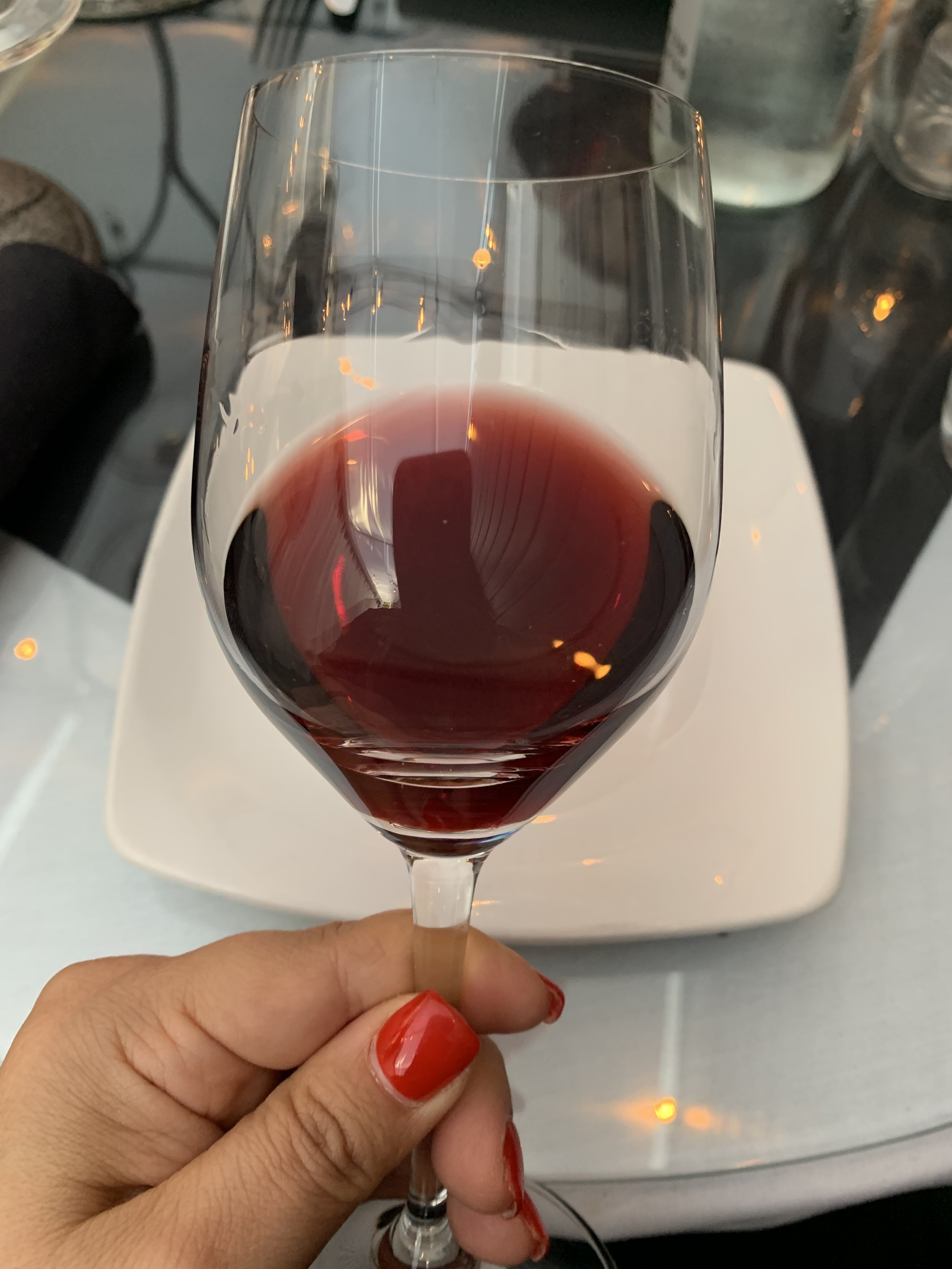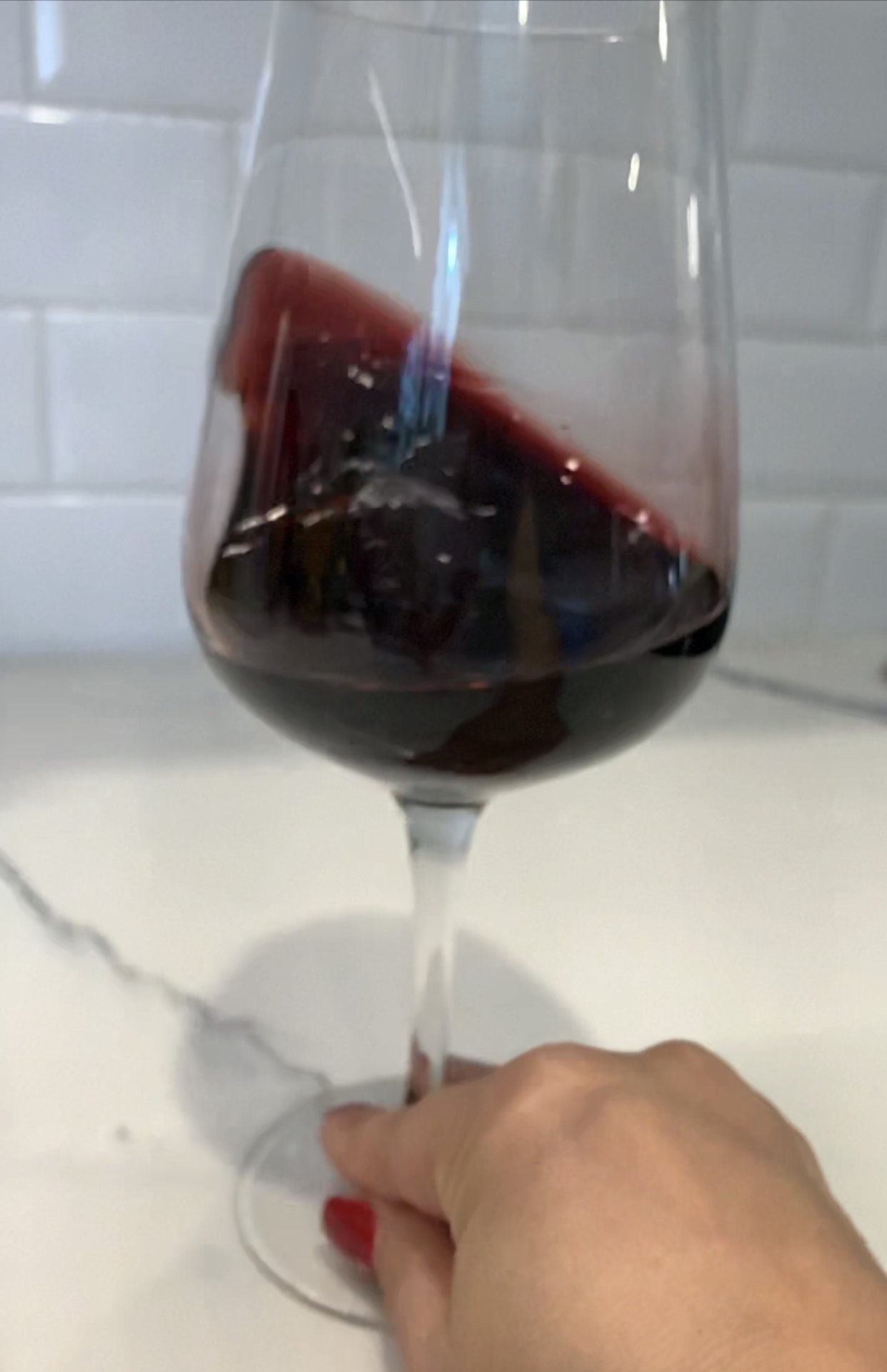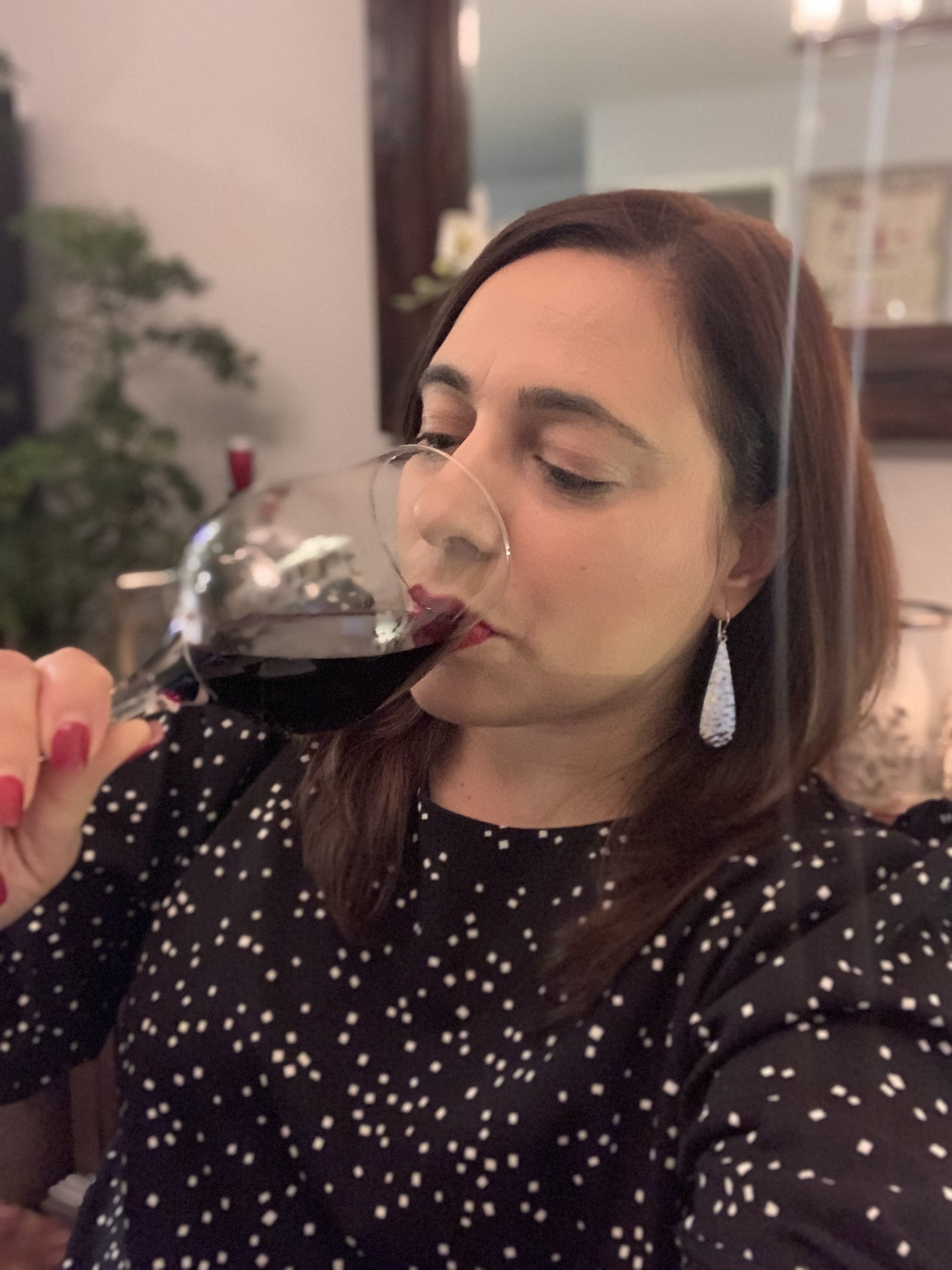Master the Art of Wine Tasting
Follow these easy steps to taste wine like wine professionals do.
LOOK.
Look.
If the environment is well lit, tilt the glass 45 degrees over a white surface and look through the wine for useful clues: How deep is the color? Can you see through the wine? Is it showing signs of browning? Is there bubbles or sediment on the wine?
The intensity of color within each of the white, rosé or red categories can give you a hint about how a wine will taste.
As a general rule, color saturation tends to match flavor intensity and may also give you clues on other qualities.
For example: white wines with golden hue are more likely to be oaky than those that are almost water white; and pale, translucent red wines are often lighter in body and less astringent than darker reds.
So, the first step to taste like a pro: LOOK!
SWIRL
Swirl the wine in the glass.
You swirl wine to smell it better!
A wine’s smells grow more intense when its aromas are concentrated in the bowl of a wine glass.
Swirling increases the wine’s surface area, boosting its rate of evaporation and aromatic intensity.
After you swirl the wine, you smell (so that is the next step).
SNIFF.
Sniff the wine deeply.
Smell is the main sense used in wine tasting, so sniffing wine before tasting is an essential step.
Dip your nose into the wine glass and take two or three deep sniffs.
Think about what you are smelling: how intense is the aroma? Does it remind you of anything? Do you recognize any fruit or vegetable aroma? Herbs or spices?
Eve if you don’t smell the wine, when you get a sip you get a blast of aromas.
We might think those are flavors, bur they are actually smells that reach the nose from the internal passage that connects the nose and mouth.
We can perceive many, complex, wine characteristics as both scents and flavors when the volatile aroma compounds in wine reach our olfactory nerves.
So, before taking the first sip, take your time and smell.
SIP.
Sip the wine.
Take a sip, a little larger than usual and swish it around.
Don’t swallow it immediately! Hold the wine in your mouth for a few seconds and let it coat every surface: tongue, cheeks, palate.
Increasing surface contact makes tastes and tactile sensations more vivid. It also warms the wine; body heat increases wine’s evaporation rate, concentrating its aromas for the olfactory nerves.
Taste buds on the tongue detect taste sensations such a sweetness and acidity.
Mouthfeel: The flesh of the tongue, palate, cheeks and gums detects tactile sensations such as texture, carbonation and tannic astringency.
Wine is art and art needs time to understand and admire. So take your time on every sip.
SAVOR.
Savor the wine.
Wine’s flavor does not disappear when you swallow. Its aftertaste lingers for a minute or more, allowing you to asses its sensory qualities and make more personal judgements.
In fact, you don’t need to swallow the wine to identify the flavors. Did you know that wine professionals often spit the wine?
Spitting is essential for those who must taste wine critically as part of their work since it minimizes alcohol absorption and prevents intoxication.
After savor the wine for a minute, decide whether you like the wine. Think which aromas are still present when you taste the wine. Orchard fruits? Berries? Stone fruits? Tropical fruits? Minerality? Herbs or spices?
Would you prefer to drink this wine alone or paired with food? What food do you think would go well with it? Red meats? Fish? Heavy sauces?
Would you buy this wine again? Why?
Now that you can assess all these subjects, you are ready to taste wine like a Pro!
Choose your next bottle of wine, taste it and tell me how you did!
Cheers!
SHOP AMAZING WINES TO PRACTICE ALL THESE STEPS AT WWW.EIGHTWINEEIGHT.COM






